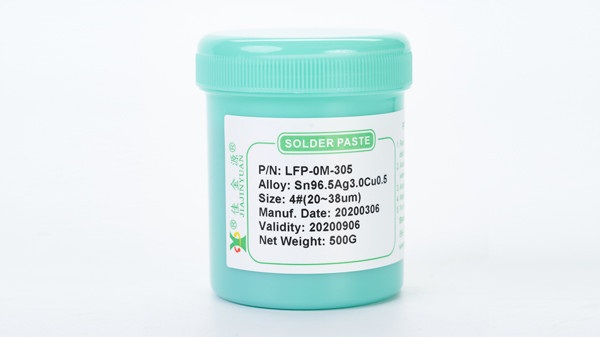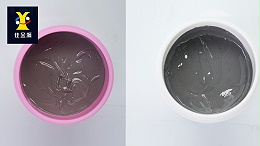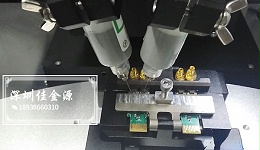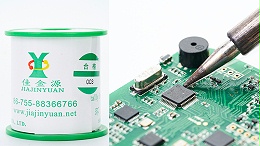
Low-temperature solder pasteWhat's the difference from high-temperature solder paste? There are many general classifications of solder paste, such as:LEDSolder paste, high-temperature solder paste, low-temperature solder paste, etc., many people are not familiar with this area, and newcomers even find it difficult to distinguish them. Now, let's have the editor of JJY Solder Paste Factory tell you what the differences are among these.

I. What are "high temperature" and "low temperature"?
Generally speaking, it refers to the difference in melting points between these two types of solder pastes. The basic melting point is217℃The high-temperature solder paste above is generally composed of chemical elements such as tin, silver and copper. inLEDThe safety of high-temperature solder paste without heavy metals in surface mount technology (SMT) processing is relatively high, and it is less likely to crack or break.
The basic melting point of low-temperature solder paste is138℃. When surface mount electronic devices cannot handle it200℃When the temperature above and the surface mount reflow processing technology is required, the soldering method should be carried out with low-temperature solder paste. It cannot undertake the maintenance of high-temperature reflow soldering and electric welding of the original andPCBIts metal composition is tin-bismuth aluminum alloy. The maximum temperature for reflow soldering of low-temperature solder paste is170-200℃.
1Characteristics of high-temperature solder paste:
1.It has good printing flip and tinning properties, and is suitable for low to low0.3mmThe interval solder layer can also be precisely printed;
2.Its viscosity changes during continuous printing It is very small, and the actual operational service life of the steel wire is long, exceeding8It does not dry easily even after an hour and still maintains a stable printing effect.
3.The solder paste remains in its original state for several hours after printing without collapse, and the surface mount components are less likely to be misaligned.
4.It has excellent welding performance and can demonstrate appropriate lubricity at different positions.
5.It can meet the requirements of different levels of welding machinery and equipment. Welding does not need to be carried out in a nitrogen injection environment. It can still demonstrate excellent welding performance within a wide range of reflow oven temperatures.
6.After high-temperature solder paste soldering, there is very little residue, no color and it has a high insulating layer characteristic impedance, and is not easy to corrodePCBThe board can meet the requirement of no cleaning.
7.Have goodICTThe detection performance is not prone to causing misjudgments.
8.It can be used for glue application with buried hole rollers.Paste in holeProcessing technology
9.The melting point of tin-silver-copper solder paste is relatively high, and it has high requirements for the furnace. However, the soldering effect of tin-silver-copper solder paste is very good, with high impact toughness, little rosin residue, and it is milky white and transparent. When printing high-temperature solder paste, it has good moisture retention and water replenishment properties and can be obtained Smooth printability, excellent demolding performance, and sustainable printing on steel screens8It has good malleability, good tin creep, and a smooth and bright spot weld.
(2Characteristics of low-temperature solder paste:
1Melting point139℃
2Completely in line withRoHSStandard
3Excellent printability, eliminating omissions, depressions and fast formation during the printing process
4It has good wettability and the weld points are bright, uniform and full
5During reflow soldering, solder beads and solder Bridges are produced
6It has a long bonding life and a long printing life of steel mesh
7It is suitable for a wide range of manufacturing processes and rapid printing
What are the differences between high-temperature solder paste and low-temperature solder paste?
1Their uses are different.
High-temperature solder paste is suitable for high-temperature soldering of components andPCB; Low-temperature solder paste, on the other hand, is suitable for components that cannot withstand high-temperature solderingPCBSuch as the welding of radiator modulesLEDWelding, high-frequency welding, etc.
2The welding effects are different.
Look at the reflow soldering. High-temperature solder paste has good solderability, is hard and firm, and has few and bright solder joints. The weldability is relatively poor. The weld points are brittle and prone to detachment, and the luster of the weld points is dull.
3The alloy compositions are different.
Soldering process of electronic components. The alloy composition of high-temperature solder paste is generally tin, silver and copper (referred to asSAC";" The alloy composition of low-temperature solder paste is generallySn-BiSeries, includingSnBi,SnBiAg,SnBiCuAmong various alloy components, etcSn42Bi58It is an eutectic alloy, and its melting point is138℃The other alloy components all have no eutectic points and their melting points are also different.
4The printing processes are different.
High-temperature solder paste is mostly used in the first reflow soldering printing, while low-temperature solder paste is mostly used in the second reflow during the double-sided reflow soldering process. I didn't know about the drawer-type reflow soldering. Look at disassembling the chip. Because the first reflow surface has larger components, when the same melting point solder paste is used for the second reflow, it is easy for the large components on the first reflow surface (which is inverted during the second reflow) that have been soldered to have false soldering or even fall off. Therefore, low-temperature solder paste is generally used for the second reflow. When it reaches the melting point, the solder on the first reflow surface will not melt again.
5The maturity of the formula is different.
The formula of high-temperature solder paste is relatively more mature, with stable components and moderate wettability. The low-temperature solder paste formula is relatively less mature, with unstable components, prone to drying, and poor adhesion retention.
Want to know about solder pasteLead-free solder pasteFor any soldering issues such as solder paste, we welcome partners to consult Shenzhen JJY Industrial Technology Co., LTD. Let's learn and grow together! The solder wire, solder paste and solder rods of JJY brand are always waiting for partners to come and take them together.



